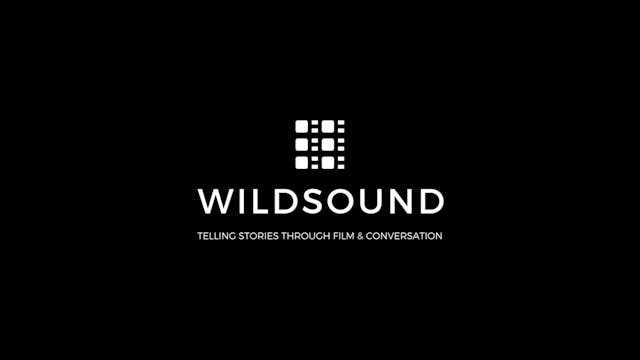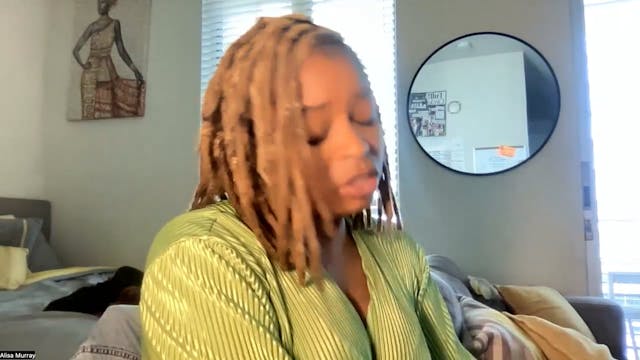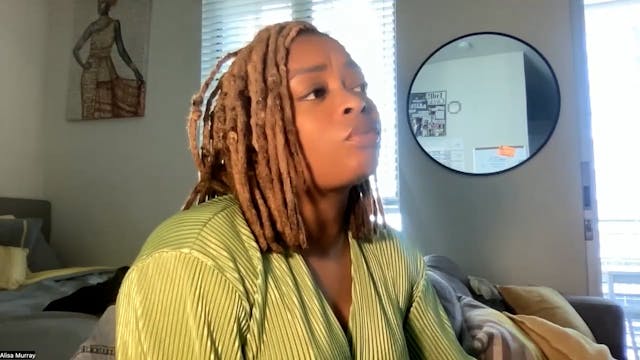Spa Sybarite short film, audience reactions (director interview)
FESTIVAL AUDIENCE FEEDBACK VIDEOS
•
8m 44s
SPA SYBARITE, 3min., USA, Experimental
Directed by Joshua Ashish Dawson
The World health organization states that “Although it is unequivocal that climate change affects human health, it remains challenging to accurately estimate the scale and impact of many climate-sensitive health risks. In the short- to medium-term, the health impacts of climate change will be determined mainly by the vulnerability of populations, their resilience to the current rate of climate change, and the extent and pace of adaptation.”
But what happens in the long term when adapting to climate change will simply get harder at which point our bodies are unable to cope with the impact of the environment’s hostility?
Capitalism works as intended when powerful actors profit off of human distress by providing market-based solutions to the social questions that it poses. à la adapting to the consequences of climate change rather than combating its causes.
With the wellness industry now being “one of the world’s fastest, most resilient markets,” outranking the pharmaceutical industry several times over, it’s easy to see wellness, not healthcare, becoming the clear & present winners of the climate change business providing "coping with climate-anxiety" an emerging market to capitalize off of. The International Finance Corporation posits that the Climate Investment Opportunities will total $23 Trillion in Emerging Markets by 2030.
When you have a total addressable market of the entire planet, the climate crisis provides a perfect excuse to make every business a climate business. Climate spas are an example of a near-future venture that weaponizes the declining health of the planet to profit from its impact on the body.
https://instagram.com/joshuaadawson
Get to know the filmmaker:
1. What motivated you to make this film?
The thoughts that led to writing this film have been very organic. It started when a few years ago I worked in an architecture firm as a designer. The firm mostly designed high-end hotels and I was very intrigued by the conversations that I would have with clients regarding how the designs of these projects were driven by its marketing. Most of which aimed to target the wealthiest people.
This sparked an idea in my head to think about how the marketing surrounding wellness ebbs and flows with the current preoccupations of its target demographic and isn't held to the same level of scientific scrutiny as the pharmaceutical industry.
2. From the idea to the finished product, how long did it take for you
to make this film?
It took me a whole year. I began by designing the world of the film. There was an immense amount of digital labor at the front end of the project to build the model which took about 4 months. We had to then pre-animate every shot in the model to make sure that I as the director, my cinematographer Ashton Rae and my extremely talented actress Kyla Dyan understood the blocking of the CGI world with respect to its mapping on the greenscreen stage. Although the film was shot over a single day at a stage in Burbank the post-production of this project took about 8 months to complete. Given that two of us in my VFX team had day jobs and another had school. We mostly completed the project over weekends and evenings.
3. How would you describe your film in two words!?
Cautionary Tale
4. What was the biggest obstacle you faced in completing this film?
Matching the various lighting setups of the greenscreen stage to that of the digital model to cohesively stitch the actress and the CGI environment together.
5. What were your initial reactions when watching the audience talking
about your film in the feedback video?
At first, it felt extremely surreal. I've been working on this project non-stop for a year and the only comments and feedback I've gotten were from people who either knew me or were involved with the project. But as I continued to watch the feedback video, I felt this extreme sense of validation, joy, and also relief that the message I aimed to get across came through.
Besides the fact that I could watch my film on a big screen... the thing I loved most about in-person festivals was the audience walking up to me after a screening and telling me what they thought of my film. When festivals pivoted to virtual, the only way I could tell how people were receiving my films was through comments by anonymous accounts or review sites. But this method of feedback through video really brings back something I felt was lost during the pivot to the virtual formats.
6. When did you realize that you wanted to make films?
Making films and telling stories was never my goal – I was trained as an architect. While I was enrolled at USC's Architecture School... I would often have conversations with students at the School of Cinematic Arts located across campus and began to trade my design-build skills and access to the fabrication facilities at the architecture school to build sets and props for student films in exchange for food on their sets. So I continued to design for productions and learned how sets work until eventually someone walked up to me and said that this intersection of design, technology, and storytelling was exactly the genesis of a class taught by famous production designer Alex McDowell of Minority Report, Fight Club, and Charlie and the Chocolate factory fame. It was a process that involved the building of the story-world before the writing of the narrative. It was a form of systems thinking and research method that he had developed during his time making Minority Report, which he now taught in a class. It was after this that I realized that I wanted to tell my own stories and make my own films about subjects and themes that I was exploring in architecture.
7. What film have you seen the most in your life?
2001: A space odyssey. More recently I've watched it on the big screen at least once every year since I've been in Los Angeles. It's a new experience each time.
8. What other elements of the festival experience can we and other
festivals implement to satisfy you and help you further your filmmaking
career?
I think I miss the networking. If there was a way that I could network with other filmmakers and other people that saw my film... whether it be through a mixer or a discord channel. That's always helpful to have. I know of a few festivals that are doing that already and I think it can be useful to a certain degree.
9. You submitted to the festival via FilmFreeway. How has your experience been working on the festival platform site?
It's been great. I've had no troubles so far. It's efficient. It has access to all the festivals that I would like to apply to in one place. I can keep track of it pretty easily. My favorite part is being able to see the festivals I'm applying to distributed on a world map.
10. What is your favorite meal?
An Indian dish called Biryani.
11. What is next for you? A new film?
Yes. A new film. It's a film that's set here in a future Los Angeles and deals with the topic of drought through a speculative fiction narrative.
Up Next in FESTIVAL AUDIENCE FEEDBACK VIDEOS
-
Surface Tension short film, audience ...
SURFACE TENSION, 6min,. UK, Documentary
Directed by Amanda Bluglass, Zena Holloway
What lies beneath the surface of Britain's rivers? Our relationship with our waterways is a romantic one, but England's precious chalk streams are as polluted as they were half a decade ago. Surprising discoveries ... -
Bee The Solution short film, audience...
BEE THE SOLUTION, 9min., UK, Documentary
Directed by Charlotte Quintanar
Leading bee experts explain the causes for declining bee populations around the world and offer approachable solutions individuals can take to support their local pollinators. -
The Boundary Water Traverse short fil...
THE BOUNDARY WATERS TRAVERSE, 12min., USA, Documentary
Directed Erik Nelson
The Running for the Boundary Waters project is designed to highlight the issue of potential sulfide-ore copper mining proposals in the watershed of, and directly adjacent to the Boundary Waters Canoe Area Wilderness to th...


